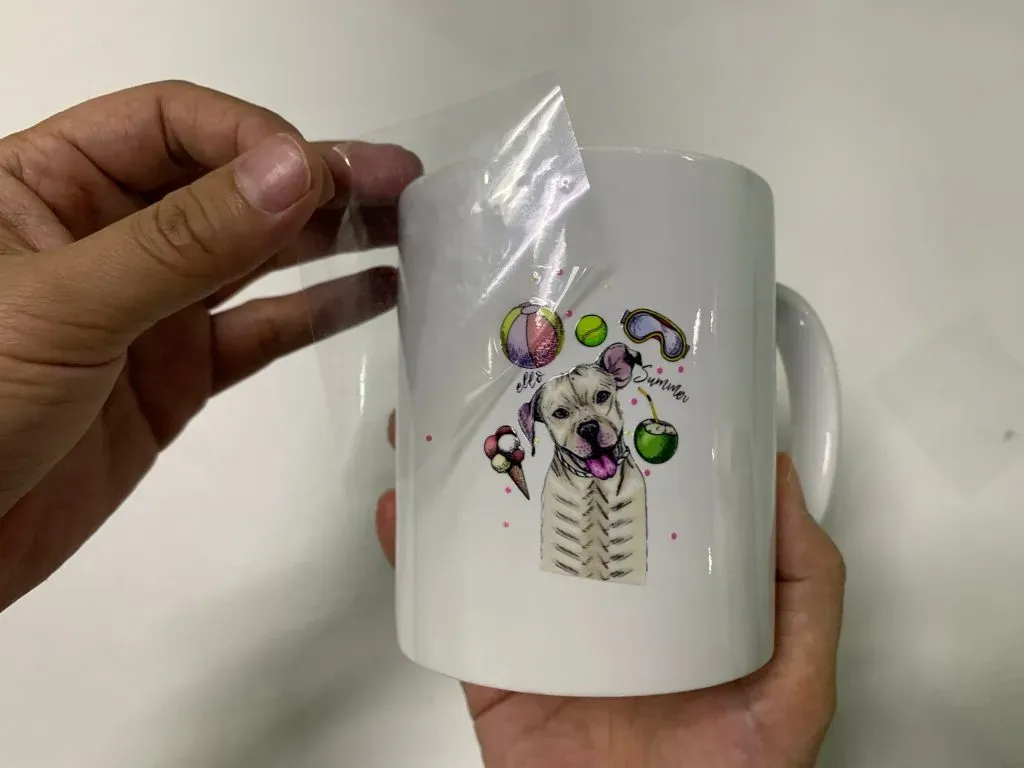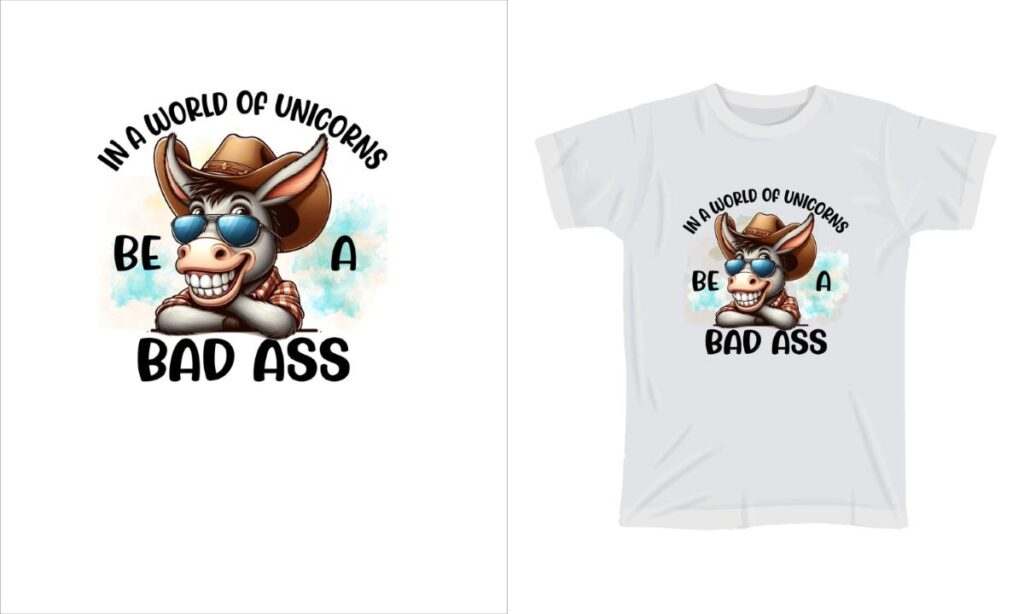UV DTF printing represents a groundbreaking advancement in the world of modern printing technologies, paving the way for a myriad of creative possibilities. As we transition towards 2025, the significance of UV Direct-to-Film cannot be overstated; it allows businesses to print high-quality images on a wide range of surfaces, including plastics, metals, and woods. The advantages of UV DTF are monumental, providing both speed and exceptional print quality, ensuring that every project meets the demanding standards of today’s market. Not only does UV DTF printing enhance product offerings, but it also empowers companies to maintain a competitive edge through innovative customization options. As the future of UV DTF unfolds, it is poised to redefine the standard for all printing methods in the industry.
Exploring UV Direct-to-Film technology unveils a new frontier in the printing landscape, where versatility meets quality. This innovative process, often referred to simply as direct-to-film printing, leverages ultraviolet light to cure inks instantly, making it suitable for an extensive range of materials beyond just textiles. With its enhanced capabilities, including rapid print speeds and superior adherence to various surfaces, ‘UV DTF’ stands as a milestone in the evolution of printing technologies. By embracing advancements pioneered by industry leaders, such as Mimaki, businesses can tap into the future of printing, characterized by diverse applications and vibrant outputs. The transformative nature of this technology is set to reshape how we approach production and design in the years leading up to 2025.
Understanding UV DTF Printing Technology
UV Direct-to-Film (DTF) printing is revolutionizing the way custom graphics are produced, offering businesses unprecedented versatility. By utilizing ultraviolet light to cure inks almost instantaneously, UV DTF technology allows for incredibly vibrant prints on a diverse array of materials, not just fabric. This capability enables businesses to expand their product offerings beyond traditional limitations, as UV DTF can be applied to surfaces such as metals, plastics, and wood, making it ideal for custom promotional merchandise, signage, and more.
Furthermore, the timely curing process of UV inks ensures that prints are not only eye-catching but also durable, standing up to various environmental conditions. This enhances the longevity of prints without the concerns associated with fading or peeling, which is especially important for businesses targeting outdoor applications or high-traffic items. Thus, understanding UV DTF printing technology equips companies with the knowledge to leverage its benefits effectively and remain competitive in a rapidly evolving marketplace.
Advantages of UV DTF Over Traditional Printing Methods
One of the standout advantages of UV DTF printing is its speed. Compared to traditional DTF methods, which can be time-consuming due to their reliance on heat transfer, UV DTF significantly reduces production time by curing inks instantly with UV light. This streamlined process allows businesses to fulfill orders more rapidly, which is critical as customer expectations for timely delivery continue to rise. Additionally, the ability to print on various substrates simultaneously can increase overall workflow efficiency.
Moreover, the color vibrancy and image quality achieved through UV DTF printing are often superior to those obtained from conventional methods. The technology utilizes a nine-color ink system that expands the color gamut, allowing for unique and striking visuals that can differentiate brands in crowded markets. As businesses seek ways to stand out, embracing the advantages of UV DTF can result in higher customer satisfaction and retention.
Future Trends in UV DTF Technology
As we approach 2025, the future of UV DTF printing looks exceptionally bright due to the ongoing advancements in both printer technology and ink formulations. Innovations such as improved ink adhesion and durability are expected to emerge, allowing prints to maintain their integrity across a broader array of substrates and environmental conditions. This will empower businesses to explore new applications and markets that were previously unfeasible with traditional DTF printing methods.
Additionally, as more companies recognize the benefits of UV DTF, we anticipate a surge in demand for high-quality, customizable products. Leading manufacturers, such as Mimaki, are already paving the way in this space with cutting-edge equipment like the UJV300DTF-75, which not only enhances print quality but also provides robust customization capabilities. The convergence of technological advancements in UV DTF promises to reshape the industry landscape, opening opportunities for businesses willing to adapt and innovate.
Exploring Innovations by Mimaki in UV DTF
Mimaki has been at the forefront of transforming UV DTF printing through groundbreaking innovations. Their UJV300DTF-75 model stands out in the market due to its unique capabilities, which combine superb print quality with unmatched versatility. This innovation allows for enhanced product customization, catering to various industries ranging from fashion to industrial applications. Such adaptability makes the UJV300DTF-75 a prized asset for businesses looking to diversify their offerings or target niche markets.
Moreover, Mimaki’s commitment to advancing UV DTF technology was prominently featured at industry events like FESPA 2025, drawing attention to the printer’s capabilities for high-volume production and intricate designs. These showcase events not only exhibit the printer’s potential but also highlight the importance of staying informed about technological advances. As businesses begin to harness Mimaki’s innovations, they will find themselves at a significant advantage in a competitive landscape.
Adopting UV DTF: A Strategic Business Choice
In the competitive realm of custom printing, adopting UV DTF technology is becoming a strategic imperative for growth-oriented businesses. Companies looking to enhance their product line must consider the myriad benefits that UV DTF offers, including quicker production times and customizable applications. With the ability to print on various surfaces, businesses can cater to a wider audience and meet diverse consumer demands without compromising on quality.
Additionally, as markets increasingly gravitate towards sustainability, UV DTF aligns well with eco-friendly practices. The instant curing process reduces energy consumption and waste compared to traditional printing methods. By positioning themselves as environmentally conscious, businesses adopting UV DTF can enhance their brand image and appeal to a growing base of eco-aware consumers. Thus, integrating UV DTF technology is not merely an operational upgrade but a holistic strategy for business sustainability and market relevance.
The Road Ahead: Preparing for the Advancements in UV DTF
The printing industry is on the brink of a significant transformation as advancements in UV DTF technology continue to unfold. With the latest innovations expected to roll out by 2025, businesses must prepare themselves for these changes. This involves investing in updated technology and training staff to utilize new printing methods efficiently. The ability to stay ahead of these advancements will differentiate successful companies from those that lag behind, emphasizing the importance of foresight in strategic planning.
Looking ahead, the future of UV DTF also relies on continuous research and development within the field. The integration of improved inks that offer even better adhesion and durability will further expand the boundaries of what’s possible in printing. By understanding these trends and preparing for changes, businesses can position themselves as industry leaders in this emerging market, ensuring they remain relevant and competitive in a world increasingly defined by technological innovation.
Frequently Asked Questions
What is UV DTF printing and how does it work?
UV DTF printing, or UV Direct-to-Film printing, utilizes ultraviolet light to instantly cure inks on various surfaces. Unlike traditional DTF methods focused on textiles, UV DTF can print on materials like plastics, metals, and wood, delivering durable and vibrant prints.
What are the advantages of UV DTF compared to traditional DTF methods?
The advantages of UV DTF over traditional DTF include faster printing speeds, superior print quality with vibrant colors, and greater versatility in materials, allowing for creative applications across varied products and surfaces.
How is Mimaki contributing to the UV DTF printing landscape?
Mimaki has made significant strides in UV DTF technology with models like the UJV300DTF-75. This printer offers extensive customization options and is designed for diverse surfaces, catering to various market needs, from promotional items to interior décor.
What innovations can we expect in UV DTF printing technology by 2025?
By 2025, we can expect advancements in UV DTF printing technology to include improved ink formulations for enhanced vibrancy and durability, as well as better adhesion properties. These innovations will empower businesses to produce higher quality, long-lasting prints.
How does UV DTF influence the future of the printing industry?
The future of the printing industry is likely to be shaped by UV DTF as businesses adopt faster, higher-quality, and more versatile printing methods. This technology is set to expand opportunities in custom printing, making it pivotal for staying competitive.
What should businesses consider when adopting UV DTF technology?
When adopting UV DTF technology, businesses should evaluate their printing strategies, focusing on investment in modern equipment, understanding the versatility of materials they can print on, and staying informed about advancements to effectively meet customer demands.
| Key Point | Description |
|---|---|
| Introduction to UV DTF | UV DTF is a revolutionary printing technology that cures inks with UV light, enhancing print quality and versatility. |
| Key Features | Includes a nine-color system, automated cutting solutions, and 36-inch roll-to-roll technology for efficient production. |
| Advantages Over Traditional DTF | Offers higher speed, enhanced print quality, and greater versatility across various surfaces compared to traditional DTF. |
| Future Ink Developments | Improvements in ink technology for vibrancy, durability, and adhesion will enhance UV DTF applications by 2025. |
| Mimaki Innovations | Mimaki’s UJV300DTF-75 model showcases customization and versatility for a wide range of printing applications. |
| Conclusion | Adopting UV DTF is crucial for businesses to stay competitive and capitalize on the growing demand for high-quality prints. |
Summary
UV DTF (Direct-to-Film) technology represents a significant leap in printing innovation, offering unparalleled speed, quality, and versatility for businesses. As printing needs evolve, the advantages of UV DTF become increasingly apparent, allowing for vibrant, durable prints on diverse surfaces that were previously challenging to capture. With advancements in ink technology enhancing durability and vibrancy, and companies like Mimaki leading the charge with groundbreaking models such as the UJV300DTF-75, the future of UV DTF looks bright. This technology not only empowers businesses to meet market demands but also ensures they can provide exceptional products without compromising on quality or efficiency. As we move toward a future increasingly shaped by UV DTF technology, it is imperative for businesses to invest and embrace these changes, positioning themselves at the forefront of the printing industry.



